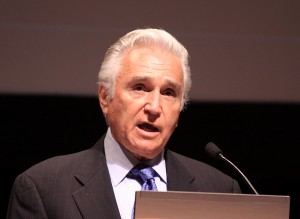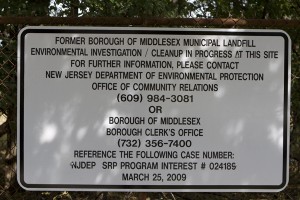On the Threshold of a Fracking Nightmare
Shamefully, NJ Governor Christie Backs the Frack
Live hand-in-hand
And together we’ll stand
On the threshold of a dream. ~~~ Moody Blues (1969) (read lyrics and listen to the music)
Binghamton, NY (9/13/10)
[Update: 12/14/16 – It took over 6 years, but the results are finally in:
- EPA Concludes Fracking a Threat to U.S. Water Supplies ~~~ end update]
Sorry for delay in writing about the important September 13 EPA public hearing in Binghamton NY to take public comment on the scope of a scientific research study to assesss the impacts of fracking.

Congressman Maurice Hinchey (D/NY)
Creation of that EPA study was spearheaded by NY Congressman Maurice Hinchey and has generated enormous public interest (the deadline for public comment is September 28)
Despite the public outrage, many well publicized destructive impacts, and a wild west gold rush mentality, since that public hearing, it looks like the Obama Administration is corrupted by gas industry lobbying (see NY Times: “Obama Rejects Time Out for Natural Gas Drilling in NY, Pa.”
Remarkably, it appears that EPA is about to cave in to gas industry pressure to politicize the science.
This would repeat the 2004 scientific fiasco (exposed by EPA whistelblowers) when Vice President Cheney and his Energy Taskforce installed Haliburton lobbyists to be in charge of EPA’s initial study that led to 2005 Congressional exemptions from environmental laws.
If the Obama EPA and Science Advisory Board allow a repeat of that, they will destroy all credibility EPA may have gained by what appear to be good faith efforts thus far.
Propublica has been doing outstanding work on the fracking issue, which excuses my laziness. So I urge anyone involved or interested in the fracking issue to read that coverage. It is extremely unusual for journalists to so beautifully investigate, understand, and report on a complex scientific and regulatory issue.
All I can say is a huge thank you to ProPublica, and to urge our home town NJ reporters to emulate that superb work.
Anyway, getting back to the issue at hand – EPA held a public hearing to take comments in Binghamton NY back on September 13.
The hearing was preceded by a street protest (I was proud to discover that I went to college with Binghamton’s Mayor, Matt Ryan, who was a fellow graduate of SUNY Binghamton’s environmental science and public policy program. In a superb irony, my later graduate thesis topic at Cornell was “Land Use Controls to Prevent Groundwater Contamination of NY Southern Tier River Valley Aquifers “).
Technically, my only comment on the scope of the EPA study is that it seeems like EPA is too narrowly focusing on drinking water impacts of chemicals, and ignoring the massively destructive land use and ecological impacts of thousands of fracking wells. And with current drought conditions, how are DRBC and NY, NJ, and Pennsylvania officials going to allocate reductions among current users that are necessary to account for the 5 million gallons of water needed for each of thousands of fracked gas wells?
Strategically, I’d note that some NY activists seems hopelessly naive in presuming a “de facto” drilling moratorium.
But NY activists were already screwed by NY Governor Paterson and the Legislature when they enacted the so called “spacing bill” that provided the gas industry a certain “by right” drilling density. (read the PR cover story here).
In a rare and refreshing bit on honesty, a western NY spokesman from the Onandaga Indian Nation recognized this by stating “we’ve already been fracked”.
The links above provide more than enough technical information, so all I will do below is post a few pictures of the event.

US EPA Region 2 Administrator, Judith Enck
In addition to posting photos, I also take this opportunity to do three things:
1) to recognize the leadership of longtime environmental warrior Congressman Maurice Hinchey (D-NY), who sponsored the legislation to conduct the EPA study, as well as the “Frack Act” (HR 2766) to regulate fracking;
2) to thank EPA Region II Adminsitrator Judy Enck for her sincere and outstanding efforts; and
3) to condemn NJ DEP Commissioner Bob Martin and NJ Governor Christie for quietly acting behiond the scenes to support fracking.
residents welcome EPA, as Binghamton mayor Matt Ryan addresses protestors
- Lehigh River (at Jim Thorpe, Pa.) is threatened too
Â
NY State’s Southern Tier remains rural (underlain by Marcellus gas bearing shale)


